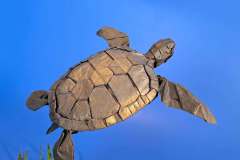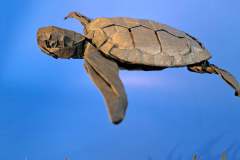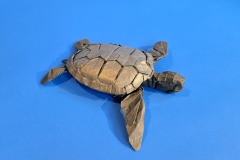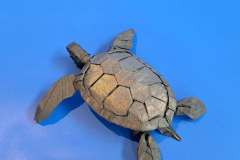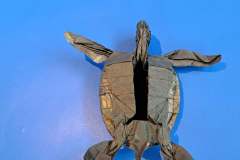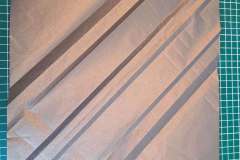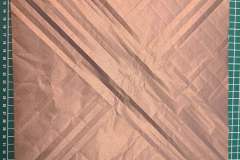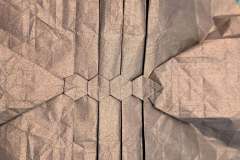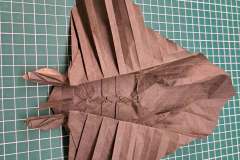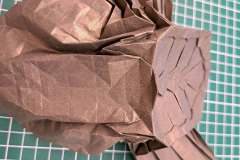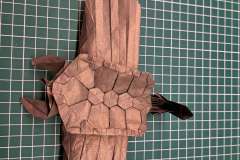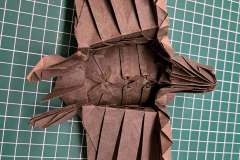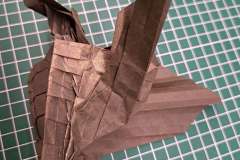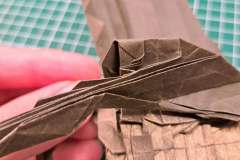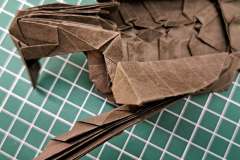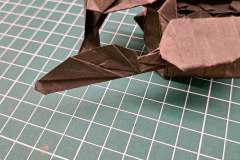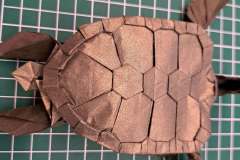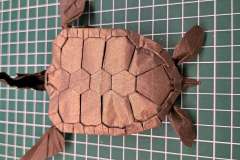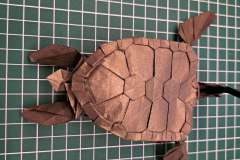After seeing a Green turtle in real life, I decided to update my old turtle design.
First of all, I paid far more attention to details. I realized I had to change the pattern on the shell, the head needed improvement, too.
The design process
I started with the shell. Needing 30° and 60° angles, I decided to make the pattern using Hexpleating. With various transition units, I was able to make a pattern that features bigger plates in the middle as well as smaller plates on the edge. The shell is already curved in the base. This way, I could make sure that there will be no unwanted side effects when shaping the shell. The pattern also got more complex than most other turtle designs I have found. In my opinion the clean transitions are worth the additional complexity.
Then, I moved on to the tail and the former hind/legs, now fins. In this phase, I realized I needed to change the general layout of the Turtle. While V1 has book symmetry, V2 of the Turtle has diagonal symmetry. The first version works similar to Satoshi Kamiya´s Loggerhead Sea Turtle, but that would have been inefficient with the new hind legs. Therefore, I put both of the hind legs and the tail into one corner, the opposite corner would form the head.
Designing the head took more than one approach. At first, I tried to make it with Hexpleating. However I realized, that Boxpleating would work far better for the head. Therefore I tried and constructed a transition connecting the shell using Hexpleating and the head using Boxpleating. Also featuring a colour change, this transition is probably the most remarkable feature of the design and definitely the most helpful.
Having designed the head, I settled for a grid by adjusting the square. Last, I made the two remaining fins and the belly. In a first attempt I used freefolding to make the fins. only to realise that there was a clean, easy and extremely efficient method using Boxpleating. So I adjusted the crease pattern.
The grid
The boxpleated parts are on a 26 diagonal grid, the hexpleated parts are constructed using the magic dimensions Robert Lang found. Dividing two opposite sides of a square into 6ths (13ths) and the other two sides into 7ths (15ths), you can approximately use them as references for an isometric grid with only minimal errors. I included a reference line in the crease pattern.
The fold
Even though precreasing this design is hard, the collapse was quite enjoyable and could be broken down into several partial collapses. Starting with the center of the shell, I moved to the edge of it. Then, I worked my way to the corners fo the square. Folded from a 30cm square (of Shadow fold paper), the finished model is 13cm long. Considering the amount of details, the fact that it has a belly and the colour-changed shell of my Green Turtle V2, I think it´s quite efficient.
This model won the popular award in the 2024 Joisel awards in the category
Figurative-Technical



